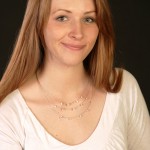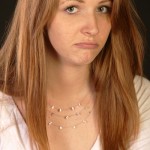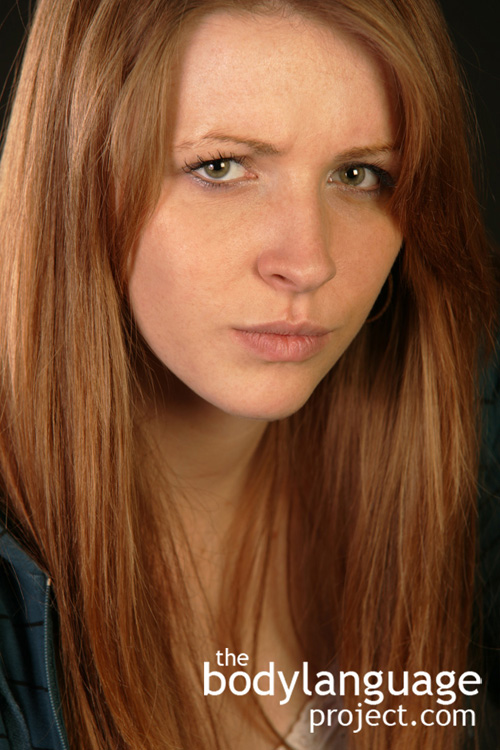The following is a comprehensive list, with accompanying description, outlining the various smiles you might encounter.
______________________________________________________________________________________________
ONE. The tight lipped smile with low intensity. This smile happens as the lips are stretched across the face and no teeth are showing. The tight lipped smile can vary with intensity as well, and it is directly related to the amount the lips are raise in the corners of the mouth. The low intensity smile has very little upward curl in the corner of the mouth and indicates a hidden attitude or thought, uncertainty, hesitation or lack of confidence. In this smile the lips are stretched toward the ears with no curl using muscles called the risorius. The risorius muscles are unable to raise the corner of the lips. Small babies have been shown to use this smile for all others except their mothers whom they reserve the use of the true smile. This smile is used to placate others or to pose for photographs when we aren’t in the mood. Strangers passing on the street might also use this shallow smile as a form of greeting or acknowledgement. The smile is a feigned or dishonest smile so that others don’t catch on that we actually don’t like them. It might also appear out of nervousness or stressed, so it can appear when meeting new people. For this reason we can call the tight lipped smile the “polite smile.” When the tight lipped smile with low intensity happens in conversation in can serve to negate the previous statement. For example, a man might say about his boss “He’s a great boss, I’d switch companies and follow him anywhere if he left.” and this might be followed by a tight lipped smile serving to negate the comment.
______________________________________________________________________________________________
TWO. Tight lipped smile with high intensity. This is a variation on the smile above, yet the corners of the lips rise even further with some teeth showing. The lips are slightly separated, the corners of the mouth are upturned, gaze is steady and warm and the posture is relaxed. We find this smile appearing when meeting new acquaintances, so it’s not a full honest smile, but does show openness to others. The tight lipped smile with high intensity is more appropriate for acquaintances because a full smile is reserved for our friends and family and would only come off as insincere with new company. A full smile around new people would lead them to think “What’s that guy’s problem, he’s grinning like we were the best of friends, yet we just met.”
______________________________________________________________________________________________
THREE. The uneven smile. We might see this smile associated with tongue-in-cheek humour or sarcasm. The smile happens when only one side of the face sports a smile and the other side does not. The opposite side may even be down turned or frowning. The uneven smile depicts a frame of mind in which opposite emotions are present. The uneven smile would accompany cheeky humour amongst friends and would crack to show others that sarcasm was intended. We rarely see this expression aside from in the West, since sarcasm is much less common around the world.
______________________________________________________________________________________________
FOUR. The upper smile. In this smile, the upper lid is raised to expose only the top row of teeth, but the true significance is that the lower teeth remain hidden. In the upper smile the jaw and teeth remain closed and the message conveyed is of medium pleasure and comes off as insecure. Used car salesman, who beam light from their teeth in this way, will seem to have a hidden agenda.
______________________________________________________________________________________________
FIVE. The grin or smirk. The smirk indicates smugness and arrogance. It is a tight lipped smile with the addition of a degree self satisfaction for good measure. A nervous smile often appears like a smirk but they are not to be confused. The smirk has accompanying dominant body language such as head back, shoulders back, open postures along with dialogue riddle with exuberant pride. The smirk will happen too when someone is under direct verbal attack. It’s the sort of face that makes you want to say “Wipe that grin off your face”. Sometimes though the smirk is due to the stress of being put under fire and isn’t always an attempt at questioning authority.
______________________________________________________________________________________________
SIX. Broad smile. In this smile the upper and lower teeth are made visible. The gaze is relaxed and the smile is intended to convey joy and pleasure. This is a true smile and not one that is easily faked. The tell tale sign of an honest smile, is the appearance of crow’s feet in the corners of the eyes. Crow feet make it seem as though the eyes are smiling. It is difficult to replicate these smiles without being truly amused or in good company as the muscles are usually out of our conscious control. We should be careful to use this smile, as with all smiles, when most appropriate, as in the wrong context will simply appear insincere.
______________________________________________________________________________________________
SEVEN. Down-turned smile or reverse smile. Happens when the mouth is inverted into a down-facing “u” shape. It indicates high stress, unhappiness, anger, tension and depression.
______________________________________________________________________________________________
Above: Paul Ekman talks briefly about types of smiles.






